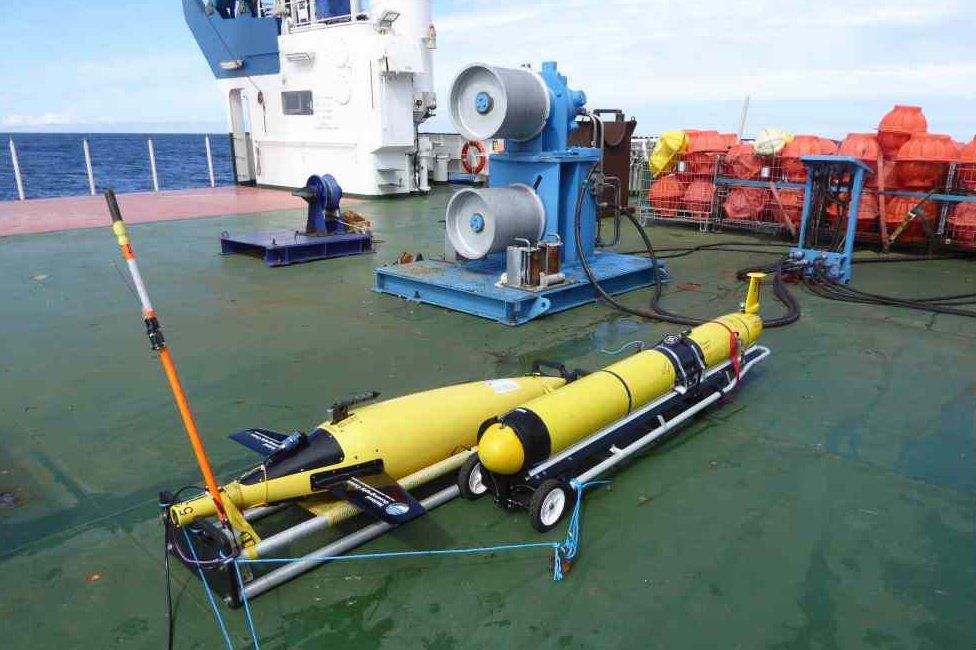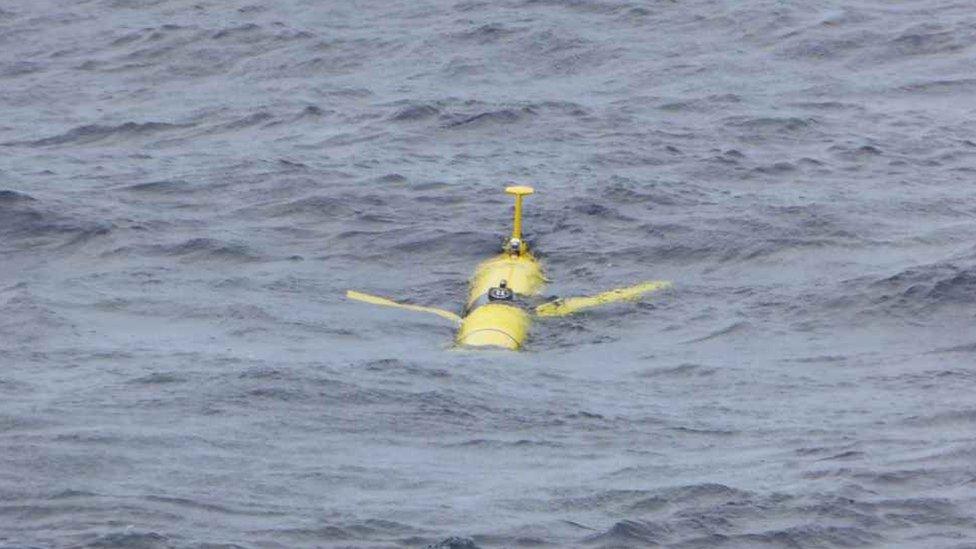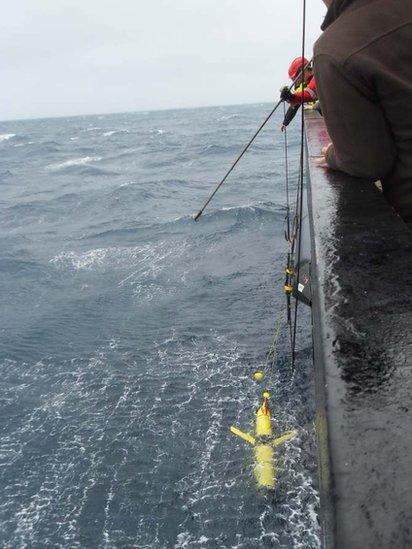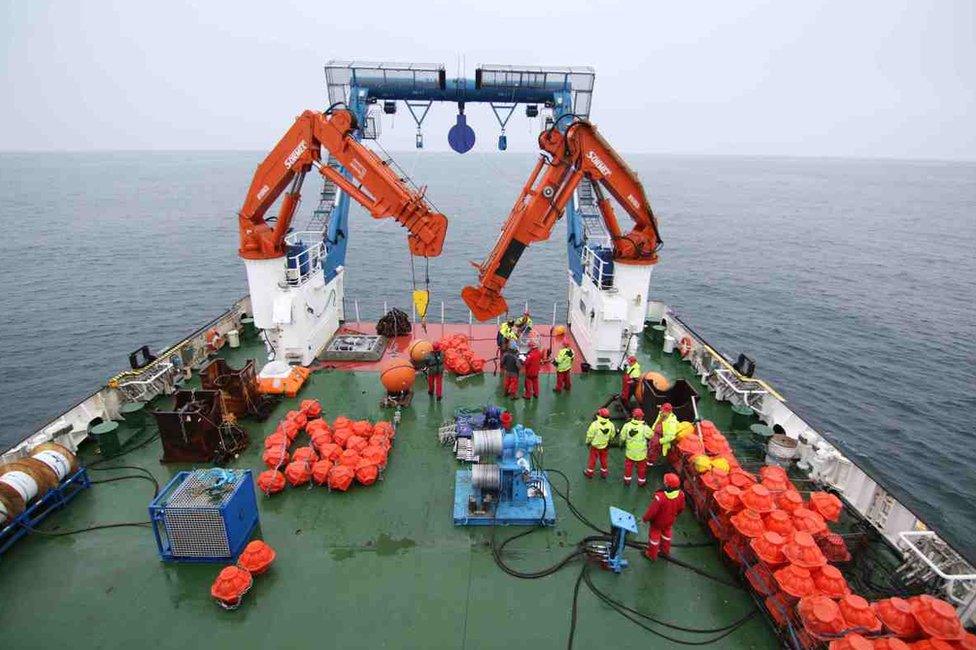Chasing the North Atlantic Subpolar Gyre
- Published

The research involves taking measurements around Rockall
Scientists are trying to better understand a complex system of oceanic currents that affects the climate over large parts of the world.
The North Atlantic Subpolar Gyre affects the weather of the North Atlantic and Europe, and also plays a part in the formation of hurricanes.
The research, external has so far helped to better predict stormy conditions for the UK in the forthcoming winter.
The work involves Southampton, Oban, Oxford and Liverpool based scientists.
The researchers have been leaving instruments below the surface of the sea off Rockall, an eroded volcano that lies 260 miles (418km) west of the Western Isles, and off Cape Farewell in Greenland.
Small robotic submarines called gliders have also been used to gather data.

Robotic submarines called gliders are helping scientists gather information
The information that is being amassed includes the temperature of a northward flow of warm water between Rockall and Scotland.
The warm water cools and sinks to the bottom of the ocean in the area north of Iceland, and can be seen as a returning southward flow of cold water off southern Greenland.

Gliders have been deployed off Rockall
Dr Penny Holliday, of the National Oceanography Centre (NOC) which is leading the research, said it was important to gain a better understanding of the subpolar gyre.
Along with other research, the study of it has already helped to create more accurate models predicting stormy weather this coming winter, she said.

Gliders can provide the researchers with almost instantaneous information
Dr Holliday added that understanding and recording conditions now would also help in predicting changes to climate in the future.
Led by NOC, the research project - UK-OSNAP - is a partnership between the Southampton-headquartered oceanography centre, Scottish Association for Marine Science in Oban, University of Oxford and University of Liverpool.
UK-OSNAP is part of a much larger international project involving the US, Canada, France, Germany, the Netherlands and China and backed by funding of almost £30m.

Other instruments are left under the waves for up to two years
So far, elements of the five-year UK research that began in 2013 have taken the UK scientists to Rockall where instruments are being left in the Rockall Trough for a year at a time before being recovered and replaced with more equipment.
Gliders have also been used to gather more instantaneous information.
The instruments off Cape Farewell are left in the water for two years.
The North Atlantic Subpolar Gyre not only affects the climate of the North Atlantic and Europe, but also the rainfall in places such as the Sahel in Africa, the Amazon and parts of the US.